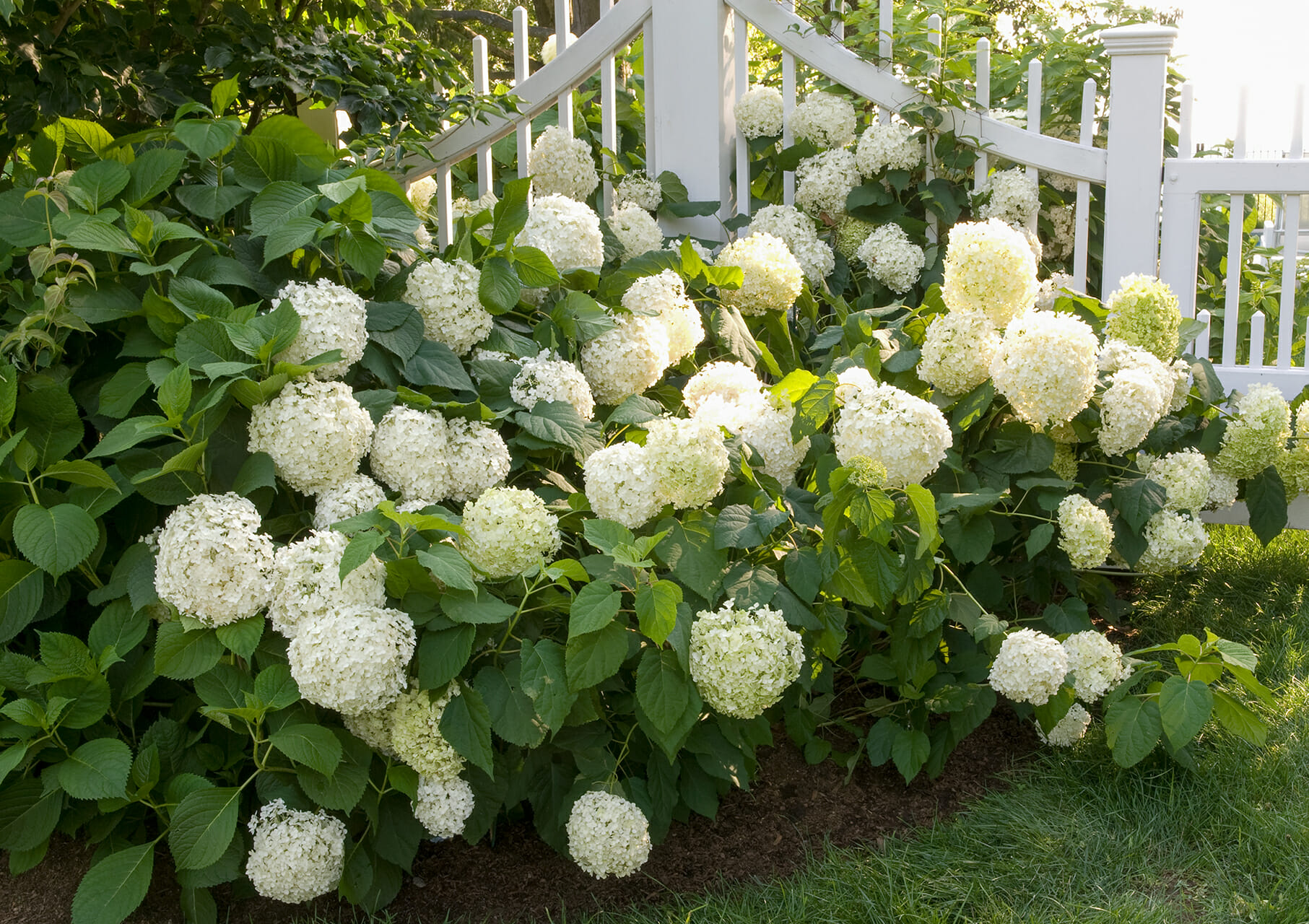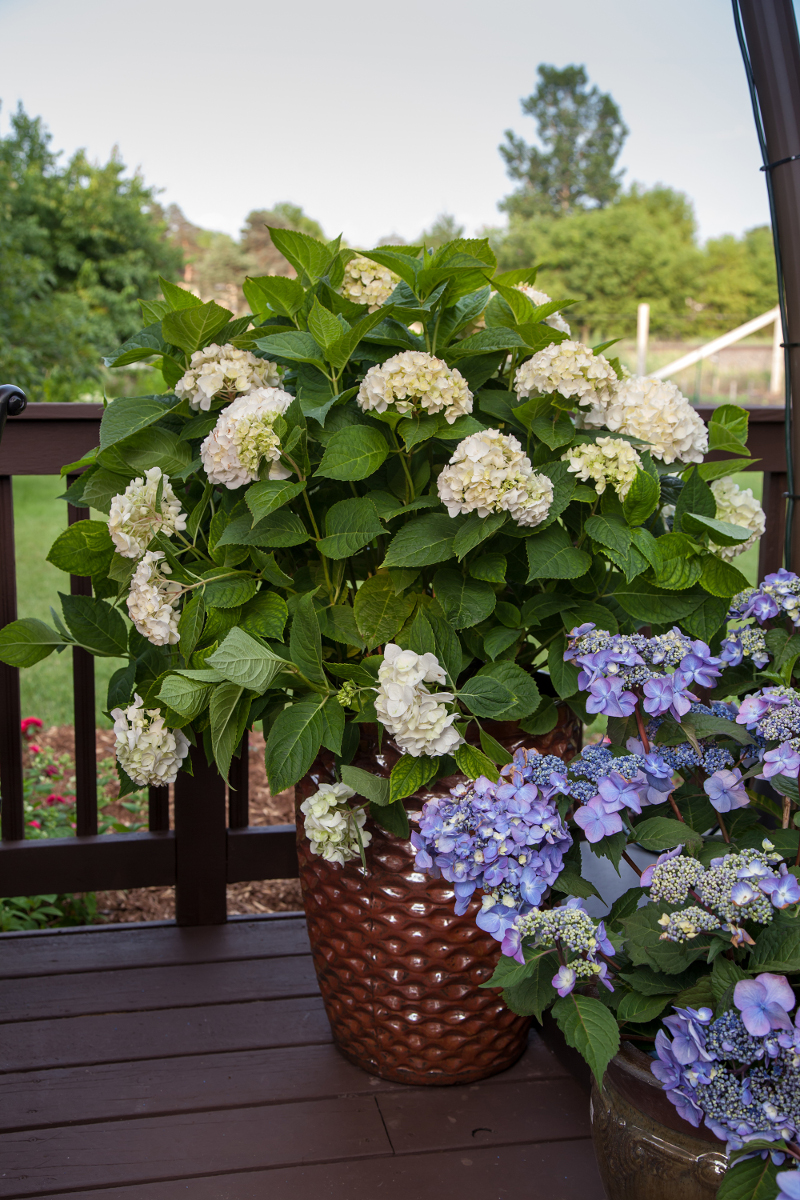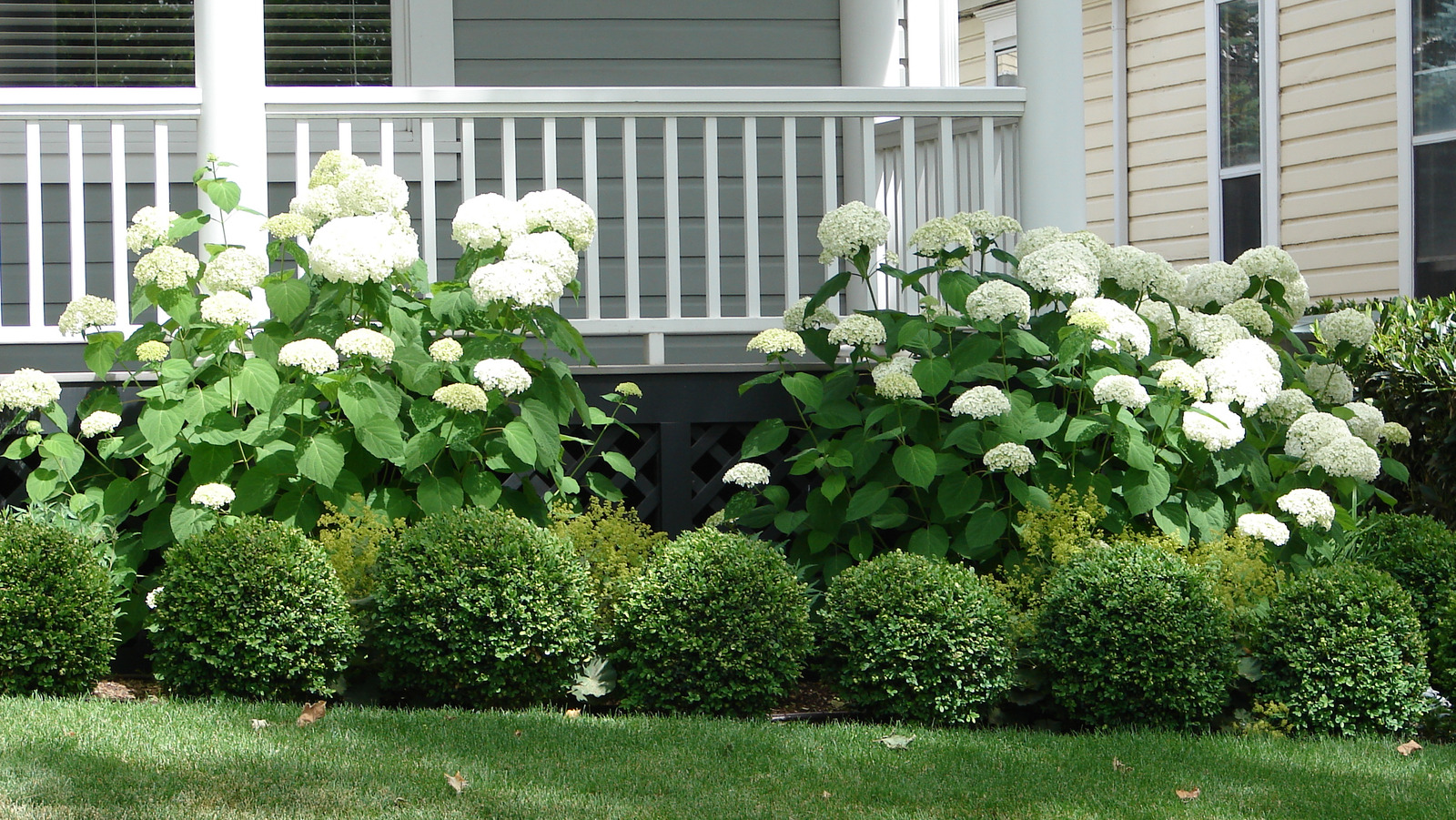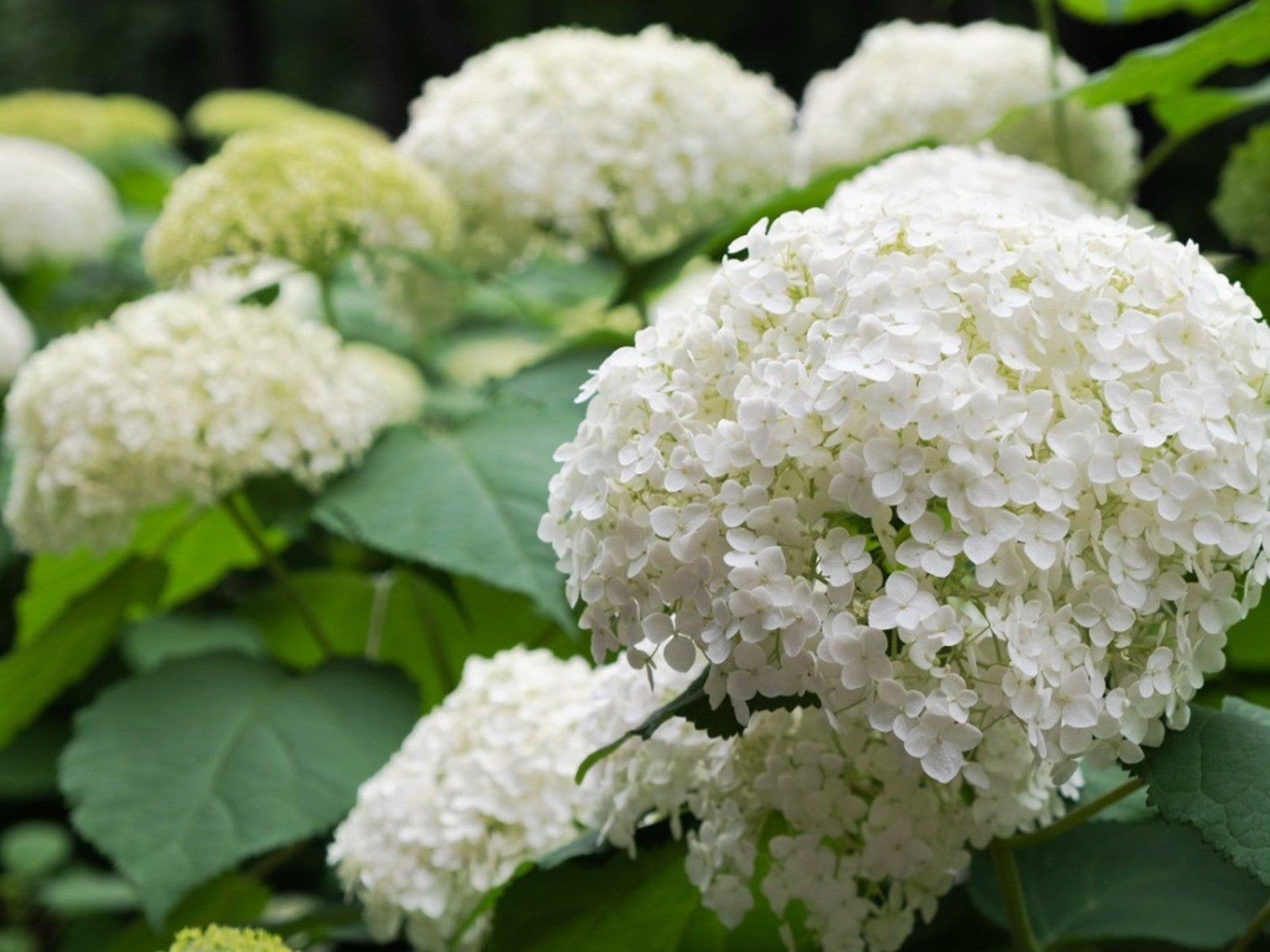Choosing the Right Variety for Large White Blooms
When it comes to selecting a hydrangea with large white flowers, there are several varieties to consider. ‘Limelight’, ‘Vanilla Strawberry’, and ‘White Bigleaf’ are popular options that offer stunning blooms and attractive foliage. To choose the best variety for your garden, consider the mature size of the plant, its growth habits, and the level of maintenance required.
‘Limelight’ is a popular variety that produces large, white blooms in mid-summer. It grows to be around 6-8 feet tall and 4-6 feet wide, making it an excellent choice for hedges or borders. This variety is also known for its ability to tolerate a range of soils and moisture levels.
‘Vanilla Strawberry’ is another variety that offers large, white blooms with a hint of pink. It grows to be around 6-7 feet tall and 4-5 feet wide, making it a great choice for smaller gardens. This variety prefers well-draining soil and partial shade.
‘White Bigleaf’ is a classic variety that produces large, white blooms in late spring. It grows to be around 6-8 feet tall and 4-6 feet wide, making it an excellent choice for statement pieces or focal points. This variety prefers rich, moist soil and partial shade.
When selecting a hydrangea variety, consider the level of maintenance required. Some varieties, like ‘Limelight’, are relatively low-maintenance and can thrive in a range of conditions. Others, like ‘Vanilla Strawberry’, may require more frequent watering and fertilization.
Ultimately, the right variety for you will depend on your specific garden conditions and personal preferences. By considering the mature size, growth habits, and maintenance requirements of each variety, you can choose the perfect hydrangea with large white flowers for your garden.
How to Care for Hydrangeas with Large White Flowers
Caring for hydrangeas with large white flowers requires attention to soil, sunlight, watering, and fertilization. By providing the right conditions, you can encourage optimal blooming and maintain the health of your plants.
Soil is a critical factor in the care of hydrangeas with large white flowers. These plants prefer well-draining, rich soil with a slightly acidic pH (around 6.0-6.5). To achieve this, mix in compost or well-rotted manure to improve soil fertility and drainage.
Sunlight is also essential for hydrangeas with large white flowers. While they can tolerate partial shade, they require at least 4-6 hours of direct sunlight per day to produce optimal blooms. If possible, choose a location that receives morning sun and afternoon shade to prevent scorching.
Watering is another crucial aspect of hydrangea care. These plants require consistent moisture, especially during the first year after planting. Water deeply once or twice a week, depending on weather conditions. Avoid overwatering, which can lead to root rot and other problems.
Fertilization is also necessary to promote healthy growth and blooming. Feed your hydrangeas with a balanced, slow-release fertilizer in the spring, following the manufacturer’s instructions. Avoid overfertilizing, which can damage the plant and the environment.
In addition to these care requirements, it’s essential to mulch around the base of your hydrangeas to retain moisture, suppress weeds, and regulate soil temperature. Use a 2-3 inch layer of organic mulch, such as wood chips or bark, and keep it a few inches away from the plant stem.
By following these care guidelines, you can create an optimal environment for your hydrangeas with large white flowers to thrive. Remember to monitor your plants regularly and adjust their care accordingly to ensure they receive the best possible conditions for growth and blooming.
Designing a Beautiful Garden with Hydrangeas as the Focal Point
When designing a garden with hydrangeas as the centerpiece, it’s essential to consider the overall aesthetic you want to achieve. Hydrangeas with large white flowers are a stunning addition to any garden, and with the right companion plants, you can create a breathtaking display.
One of the key considerations when designing a garden with hydrangeas is the color scheme. White flowers provide a clean and elegant backdrop for a variety of colors, from soft pastels to bold and bright hues. Consider pairing your hydrangeas with complementary flowers like blue delphiniums, pink roses, or purple coneflowers.
Texture is another important element to consider when designing a garden with hydrangeas. The large, rounded leaves of hydrangeas provide a beautiful contrast to the delicate foliage of plants like ferns or hostas. You can also add texture with the use of ornamental grasses or shrubs with interesting bark.
Form is also crucial when designing a garden with hydrangeas. These plants can grow quite large, so it’s essential to consider their mature size when selecting companion plants. Choose plants that will grow to a similar height or slightly taller to create a balanced and harmonious display.
Some popular companion plants for hydrangeas with large white flowers include:
- Boxwood: A classic choice for topiaries or hedges, boxwood provides a beautiful contrast to the rounded leaves of hydrangeas.
- Daylilies: These drought-tolerant perennials produce beautiful, trumpet-shaped flowers in a range of colors and provide a nice contrast to the large leaves of hydrangeas.
- Coralbells: With their maple-like leaves in shades of pink, coral, and red, coralbells add a pop of color and texture to the garden.
By considering color scheme, texture, and form, you can create a stunning garden with hydrangeas as the focal point. Remember to choose companion plants that complement the beauty of your hydrangeas and provide a balanced and harmonious display.
Tips for Growing Hydrangeas in Containers
Growing hydrangeas with large white flowers in containers can be a great way to add a touch of elegance to your patio, balcony, or indoor space. However, it requires careful consideration of the container size, soil, and care routine.
When choosing a container for your hydrangea, make sure it is at least 12-18 inches deep and has good drainage holes. This will provide enough room for the roots to grow and prevent waterlogged soil. A larger container will also help to prevent the soil from drying out too quickly.
The soil you use in your container is also crucial for the health of your hydrangea. Use a high-quality potting mix that is specifically designed for containers and has good drainage properties. Avoid using garden soil from your outdoor garden, as it can compact and prevent proper drainage.
Watering is also critical when growing hydrangeas in containers. Make sure to water your plant thoroughly, but avoid overwatering, which can lead to root rot and other problems. Check the soil moisture by sticking your finger into the soil up to the first knuckle. If the soil feels dry, it’s time to water.
Fertilization is also important for hydrangeas in containers. Use a balanced, water-soluble fertilizer that is specifically designed for containers. Follow the instructions on the label for the recommended application rate and frequency.
Some other tips to keep in mind when growing hydrangeas in containers include:
- Provide enough sunlight: Hydrangeas need at least 4-6 hours of direct sunlight per day to produce optimal blooms.
- Protect from extreme temperatures: Hydrangeas prefer temperatures between 65-75°F (18-24°C). Avoid placing your container in areas with extreme temperatures, such as near heating vents or air conditioning units.
- Prune regularly: Prune your hydrangea regularly to maintain its shape and promote healthy growth.
By following these tips, you can successfully grow hydrangeas with large white flowers in containers and enjoy their beautiful blooms all season long.
Common Problems and Solutions for Hydrangeas with Large White Flowers
While hydrangeas with large white flowers are relatively low-maintenance plants, they can still be susceptible to certain problems. Here are some common issues that may arise and their solutions:
Leaf Spot: Leaf spot is a common problem that can cause small, circular spots to form on the leaves of your hydrangea. To prevent leaf spot, make sure to provide good air circulation around your plant and avoid overhead watering. If you do notice leaf spot, remove the affected leaves and treat the plant with a fungicide.
Powdery Mildew: Powdery mildew is a fungal disease that can cause a white, powdery coating to form on the leaves of your hydrangea. To prevent powdery mildew, make sure to provide good air circulation around your plant and avoid overhead watering. If you do notice powdery mildew, remove the affected leaves and treat the plant with a fungicide.
Root Bound Conditions: Hydrangeas with large white flowers can become root bound if they are not provided with enough space to grow. To prevent root bound conditions, make sure to plant your hydrangea in a container that is at least 12-18 inches deep and has good drainage holes. If you do notice that your hydrangea is becoming root bound, consider transplanting it into a larger container.
Pests: Hydrangeas with large white flowers can be susceptible to pests such as aphids, whiteflies, and spider mites. To prevent pests, make sure to inspect your plant regularly and treat it with insecticidal soap or neem oil if necessary.
Diseases: Hydrangeas with large white flowers can be susceptible to diseases such as leaf spot, powdery mildew, and root rot. To prevent diseases, make sure to provide good air circulation around your plant, avoid overhead watering, and treat the plant with a fungicide if necessary.
By being aware of these common problems and taking steps to prevent them, you can help ensure that your hydrangea with large white flowers remains healthy and thrives.
Pruning and Deadheading for Optimal Blooming
Pruning and deadheading are essential techniques for promoting optimal blooming in hydrangeas with large white flowers. Pruning helps to maintain the shape and size of the plant, while deadheading encourages the plant to produce more flowers.
When to Prune: The best time to prune hydrangeas with large white flowers is in late winter or early spring, before new growth begins. This allows you to remove any dead or damaged branches and shape the plant to maintain its desired form.
How to Prune: To prune your hydrangea, start by removing any dead or damaged branches. Cut these branches off at the base, making a clean cut just above a growth node. Next, remove any weak or spindly growth, cutting it back to a stronger branch. Finally, shape the plant to maintain its desired form, cutting back any branches that are growing outside of the plant’s natural shape.
Deadheading: Deadheading is the process of removing spent flowers from the plant. This encourages the plant to produce more flowers, as it directs the plant’s energy towards producing new blooms rather than seed production.
How to Deadhead: To deadhead your hydrangea, simply remove the spent flowers from the plant. Cut the stem back to the first set of leaves, making a clean cut just above a growth node. This will encourage the plant to produce new flowers and maintain its optimal blooming potential.
Tips for Pruning and Deadheading:
- Make clean cuts: When pruning or deadheading, make sure to make clean cuts just above a growth node. This helps to prevent damage to the plant and promotes healthy growth.
- Use the right tools: Use sharp, clean pruning tools to prevent spreading disease and to make clean cuts.
- Prune and deadhead regularly: Regular pruning and deadheading will help to maintain the plant’s optimal blooming potential and promote healthy growth.
By following these tips and techniques, you can promote optimal blooming in your hydrangea with large white flowers and enjoy a stunning display of blooms all season long.
Using Hydrangeas with Large White Flowers in Cut Flower Arrangements
Hydrangeas with large white flowers are a popular choice for cut flower arrangements due to their stunning appearance and versatility. Here are some tips on how to harvest and prepare the flowers for arrangements, as well as suggestions for complementary flowers and foliage:
Harvesting: To harvest hydrangeas with large white flowers, cut the stems at an angle using a sharp knife or pruning shears. Make sure to leave a small portion of stem attached to the flower head to allow for easy handling.
Preparing: To prepare the flowers for arrangements, remove any leaves that will be below the waterline to prevent bacterial growth. Trim the stems to the desired length and place them in a vase or container filled with fresh water.
Complementary Flowers and Foliage: Hydrangeas with large white flowers pair well with a variety of complementary flowers and foliage, including:
- Roses: A classic combination, pairing hydrangeas with roses creates a stunning and elegant arrangement.
- Peonies: The lush, full blooms of peonies complement the large white flowers of hydrangeas perfectly.
- Greenery: Adding some greenery, such as eucalyptus or ferns, can add depth and texture to the arrangement.
Arrangement Ideas: Here are some arrangement ideas to get you started:
- Monochromatic: Create a stunning monochromatic arrangement by pairing hydrangeas with large white flowers with other white flowers and foliage.
- Pastel: Soften the look of hydrangeas with large white flowers by pairing them with pastel-colored flowers and foliage.
- Wildflower: Create a whimsical and romantic arrangement by pairing hydrangeas with large white flowers with wildflowers and greenery.
By following these tips and ideas, you can create beautiful and unique cut flower arrangements using hydrangeas with large white flowers.
Hydrangea Varieties with Similar Characteristics
While ‘Limelight’, ‘Vanilla Strawberry’, and ‘White Bigleaf’ are popular varieties of hydrangeas with large white flowers, there are other varieties that share similar characteristics. Two such varieties are ‘Blume’ and ‘Tardiva’.
‘Blume’ is a variety of hydrangea that produces large, white flowers with a hint of pink. It is a compact plant that grows to be around 3-4 feet tall and 4-5 feet wide, making it a great choice for smaller gardens. ‘Blume’ prefers well-draining soil and partial shade.
‘Tardiva’ is another variety of hydrangea that produces large, white flowers. It is a late-blooming variety that produces flowers in late summer and early fall. ‘Tardiva’ grows to be around 6-8 feet tall and 4-6 feet wide, making it a great choice for larger gardens. It prefers well-draining soil and full sun to partial shade.
Both ‘Blume’ and ‘Tardiva’ share similar characteristics with ‘Limelight’, ‘Vanilla Strawberry’, and ‘White Bigleaf’, such as large, white flowers and a compact growth habit. However, they also have some unique features that set them apart.
‘Blume’ has a more compact growth habit than ‘Limelight’ and ‘Vanilla Strawberry’, making it a great choice for smaller gardens. It also has a more delicate appearance, with smaller flowers and a more subtle color.
‘Tardiva’ has a later blooming period than ‘Limelight’ and ‘Vanilla Strawberry’, making it a great choice for gardens that need a late-season boost of color. It also has a more upright growth habit, making it a great choice for gardens with limited space.
By considering these unique characteristics, you can choose the best variety of hydrangea with large white flowers for your garden.






/GettyImages-573922587-591d08165f9b58f4c06a2cd8.jpg)

